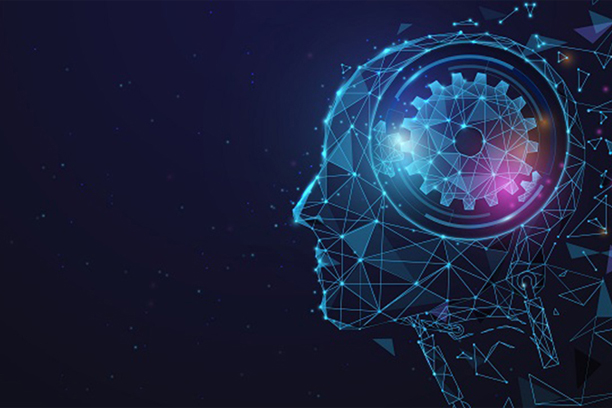As the hype of AI has accelerated, industrialists have been promoting how their products and services can use Artificial Intelligence. Whereas, AI is really impacting the future of every industry and every human being and promises significant benefits for enterprises and economies through its contributions to innovation and productivity. Artificial intelligence is considered the main driver for all emerging technologies like Big data, Machine learning and IoT.
AI has the capability to provide manufacturers with insights into their operation and detect frequently facing challenges. Leveraging AI and machine learning into industries can help to reduce maintenance costs, improve operational efficiency and plan future financials. Recently Deloitte reported in a survey on AI adoption in manufacturing revealing that 93% of companies believe AI will be a crucial technology to drive growth and innovation. Carrying out computer-based intelligence in manufacturing assembly lines is getting common among producers. As per Cap Gemini’s examination, the most significant part of the European producers (51%) is carrying out artificial intelligence arrangements, with Japan (30%) and the US (28%).
A similar report additionally uncovers that most mainstream artificial intelligence use cases in assembling are improving:
- Maintenance (29% of assembling simulated intelligence use cases)
- Quality (27%)
Challenges
Often businessperson refers to AI as simply one component. But AI requires a foundation of specialized hardware and software along with huge data to train machine learning algorithms. The vast majority of manufactures are no strange to automation, by automating processes they were able to provide a better product and achieve the growing demands. But now manufacturers are leading towards the AI-powered analytics to achieve even better product quality and improve efficiency to a huge extent. However, manufacturers need to overcome several barriers that obstruct leveraging AI:
- Skill person
- High Computing power
- Data quality and collection
Skill Person
Organizations across all industries find it difficult to hire researchers and artificial intelligence experts are limited and hard to recruit. AI analytical systems require an interdisciplinary group of information researchers, ML engineers, programming planners, BI analysts and SMEs. Numerous organizations don’t have and can’t bear to send these assets for a solitary information science project. Also, when you have multiple information science tasks to execute, it turns out to be much harder proportional to follow through on schedule.
Data Quality and Collection
Owning the right data is more valuable and crucial than owning algorithms, it works as a source of power for AI/ML. And industries are enriched with analytical data required for AI to run but the problem is with data collection due to many challenges in industry. Data needs to go through a number of cleaning processes for algorithms. The process involves:
Rouge Data:
The most challenging part is to separate out inaccurate and inconsistent data The data collected comes with lots of noise due to many factors in industries. So the data needs to be filtered and a useful subset of data is chosen for further processing.
Training:
For ML algorithms to work, they are trained with labelled data after lots of iteration. Training takes lots of time and computation power to generate the desired outcome.
High Computing power
AI is essentially an immense series of mathematical problems that learn to predict the future outcomes. In image recognition, a powerful computer performs millions of math problems per second for the system to understand and recognize the pattern.
Machine Learning and Deep Learning techniques prerequisite a sequence of highly sophisticated calculations to be made very rapidly, in microseconds or even nanoseconds. Artificial intelligence utilizes a lot of processing power.
Cloud computing and parallel processing systems have been able to provide a substitute solution in the short term. However, as the total amount of data in the world stays to grow and deep learning driving the automated conception of increasingly complicated algorithms, the bottleneck will continue to slow down development progress.
Even though we have rapid network speeds, it isn’t adequately quick to present complex computer-based intelligence applications like far-off vehicles. Current 3G and 4G organizations frequently experience slack issues, disengages and delays. It wouldn’t be sufficiently dependable to convey innovation, for example, driving trucks distantly as driving requires rapid response times. A deferral in correspondence to the car could have deadly outcomes in outrageous circumstances. The introduction of fiber optics cables and 3G and 4G networks enable exponentially more significant quantities of data to fly back and forth at a quick speed. Fifth-generation wireless networks (5G) promises to be the next significant improvement for many industries, especially for AI.
According to the IDC, we have jointly shaped nine times more data than we did between the start of civilization and the year 2015. This data is what pushes artificial intelligence improvement.
Best Practice
- Understand your data and business
- Start simple.
- Plan and track your experiment
Understand your Data and Business
It is essential to understand the data you have collected or are going to accumulate. You cannot skip this step; it is a critical part of the project.
Data analysis helps in determining the data quality and helps in defining the goals of the project.
The above should result in metrics that help track project development from a machine learning perspective and business factors.
Start Simple
Starting with simple methods or approaches gives you more insights into the problems than more complicated or advanced methods, as simple methods are easier to understand.
Plan and Track your Experiments
Many values of different variables affect the system’s results and the performance of the AI algorithms. It is particularly valid for deep learning models as one can experiment with model architectures, cost functions, and hyper-parameters. Hence, tracking the results becomes challenging, mostly if several people work together. The solution is simply a notebook. Depending on the team size and your needs, it might be a straightforward approach as a shared spreadsheet or a more sophisticated ML flow.
Conclusion
Though these challenges in AI look pretty disheartening and upsetting, we can overcome this very effectively through the collective effort of people. But AI is definitely the future of the world and can drastically change the outcomes of the industry, such as it can help us in the maintenance of the machine by predicting its fault early. It can decrease the significant amount of downtime of the machine and increase production. We at Decima provide the service of in building AI-based applications for the industry such as predictive maintenance of the machine.

